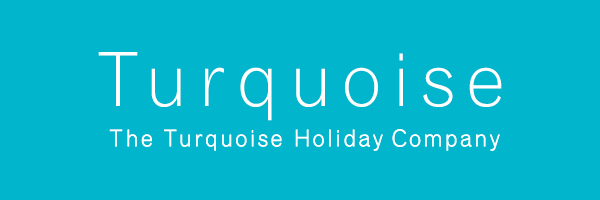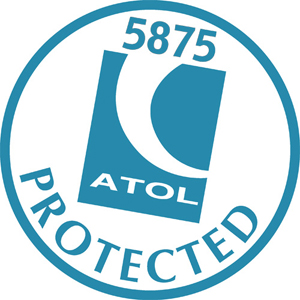
-
Inspiration
-
Tailor-Made
- Tailor Made Holidays by Month
- Action & Adventure
- Adults Only
- All-Inclusive
- Culture
- Festive Breaks
- Islands
- Multi-Centre
- Overwater Bungalows
- Safari Beach
- Sailing
- Unusual & Unique
- Wildlife
- Winter Sun
-
Honeymoons
- Honeymoons By Month
- Adventure Lovers
- Beach Bliss
- Babymoons
- Familymoons
- Island Hopping
- Mini-Moons
- Overwater Bungalows
- Safari Beach
- Twin-Centre
- Unique Honeymoons
- Families
-
Special Occasions
- All-Inclusive
- Bucket List
- Big Birthdays
- Blow the Budget
- Once in a Lifetime
- Private Villas & Islands
- Wedding Anniversaries
-
Tailor-Made
-
Destinations
- Africa
- Australia & New Zealand
- Asia
-
Caribbean
- Anguilla
- Antigua and Barbuda
- Barbados
- Bermuda
- British Virgin Islands
- Grenada
- Jamaica
- Saint Lucia
- Sint Eustatius
- St Barths
- St Kitts & Nevis
- St Vincent & The Grenadines
- Sailing the Caribbean
- Turks & Caicos
- Indian Ocean
- Mediterranean
- Mexico
- Middle East
- North America
- South Pacific
-
Honeymoons
- Honeymoons By Month
- Adventure Lovers
- Beach Bliss
- Babymoons
- Familymoons
- Island Hopping
- Mini-Moons
- Overwater Bungalows
- Safari Beach
- Twin Centre
- Unique Honeymoons
- Offers
- Gift List
- Blog
-
About
- Our Brochures
- Our Story
- Our People
- Our Awards
- Our Reviews
- Our Partners
- Our Community
- FAQ
- Booking Conditions
- Insurance
- Careers
- Contact

- Homepage
- Destinations
- Africa
- Botswana
Holidays in Botswana
Burnt orange sunsets. Desolate salt pans melting into the horizon. Thousands of elephants wading through a vast riverine delta. Botswana is a land packed with natural drama and one that can lay claim to being one of Africa’s last remaining true wildernesses.
Going on safari here is a luxury holiday in all senses, from the top-class camps and lodges pitched in its wild heart to the close-up encounters of one of the densest wildlife populations on Earth. The Okavango Delta is rightfully Botswana’s head-turner, an extraordinary web of watery channels fed by the Angolan highlands that snake past papyrus reeds, forested islands and emerald floodplains. It’s an otherworldly oasis in the arid Kalahari Desert and wildlife rules here; the roars of lions and leopards are a daily soundtrack, hippos yawn and birds soar as you glide past in a mokoro (traditional dug-out canoe) on a river safari. Herds of elephants also wander the lush plains between here and neighbouring Chobe National Park.
The Kalahari couldn’t be more different. The salt pans of Makgadikgadi National Park look more like the surface of the Moon, until the November rains set in and it becomes a sodden paradise for zebra, giraffe and lions – just one of a long list of wildlife-filled memories you’ll capture on your trip to Botswana.
Botswana highlights
Home to the ‘Big Five’, Moremi Game Reserve is nestled in the heart of the Okavango Delta. It offers a rich array of experiences, with safari game drives slicing through mopane woodland and dry savannah where you can glimpse the ‘Big Five’, red lechwe, impala, cheetah and more within just an arm’s length. Hop on a river safari aboard a traditional mokoro (dug-out canoe) for a relaxing wildlife experience; ford the delta’s marshland and lagoons, parting reeds to reveal herds of elephants drinking from lush islands and the eyes of the odd crocodile glinting in the afternoon sun. However you choose to explore Moremi’s landscapes, make sure you look up. Nearly 500 bird species flit the reserve, from a malachite kingfisher perched on a reed to a coppery-tailed coucal swooping overhead.
The Okavango Delta isn’t just about Moremi, though. With wildlife free to roam through the whole delta, spotting opportunities are just as abundant closer to its fringes and arguably more exclusive. Places like the Gomoti Plains in the south-east offer walking safaris (not offered in Moremi), a raw experience in the riverine landscape where it’s just you and your guide on foot tracking down hippos, lions and rhinos, among others. In the north-east, the Khwai River area offers self-driving opportunities for those staying in nearby camps, with it being one of the best places for spying African wild dogs thanks to a number of nearby dens.
The Kalahari is a land that’s worlds away from the riverine Okavango Delta. The vast Makgadikgadi Pans seemingly go on forever, the barren milky plains melting into the horizon and only disturbed by the odd lonely baobab tree. On a first glance, it can be difficult to comprehend that anything can even survive here but small year-round watering holes draw wildlife. Springboks, oryxes and brown hyenas all come here to quench their thirst but the Kalahari lions are the stars of the show and bigger than their peers in the Okavango.
Located in the far north of the Okavango Delta, Savuti and Selinda game reserves offer sprawling grassland once fed by a pair of dried-up river channels. While elephants and lions are in healthy numbers here, perhaps the greatest drawcard these reserves hold is the unique way you can experience them: on horseback. Cantering through the African bush truly is exhilarating, even if you aren’t a seasoned rider.
Yes, we know it’s not in Botswana but the thundering cascade of Victoria Falls, which straddles the border of Zambia and Zimbabwe, is well worth a visit as an epic add-on to any Botswana trip. What’s more, there’s a multitude of ways to experience this UNESCO-listed, mile-long curtain of water, from a once-in-a-lifetime helicopter ride through the spray to simply feeling the cooling mist on your face from a number of viewpoints.
Enquire Now
Where to stay in Botswana
Wildlife is king in Botswana and a range of wilderness safari camps afford you the chance to right on the edge of nature. From safari-luxe camps right in the heart of the Okavango Delta to stylish tented accommodation sitting among the Makgadikgadi Salt Pans, you can let Botswana's incredible animals come to you.
The best time to visit Botswana
With its landscapes changing through the year, Botswana is a year-round holiday destination.
Botswana’s rainy season usually occurs between January and February, during the country’s summer from November-March. Then, you might experience brief but heavy thunderstorms, but with it comes great game viewing and lots of birdlife. You might even be lucky to witness the miracle the rains bring – transforming the dry lands to vibrant, lush greenery. In March, the rain starts to ease off and days become drier.
April to May features comfortable temperatures – around 15-30°C. The lands are lush and beautiful and April marks the start of the period where large numbers of animals migrate towards the Okavango Delta (until November). Having said that, the grass is long after the rains, making game viewing more difficult than other seasons.
June, July & August is Botswana’s winter and are marked by cloudless days and mild temperatures between 5-27°C on average. In the Okavango Delta, the floodwaters from Angola begin to fill the lagoons and streams, while the landscapes outside of the delta start drying up, fading from emerald green to a dry khaki colour. At this time of year, animals can often be seen congregating around watering holes, making it an excellent time to go on a safari.
Visit Botswana from late August to September and you’ll be in-between the cold of winter and the intense heat, before the rains. Temperatures range from 15-31°C, and towards the end of September temperatures can go above 40°C. Game viewing is excellent during spring thanks to the lack of thick vegetation and the waterholes drying up.
Botswana Travel Essentials
For Botswana, Typhoid, Polio, Tetanus and Hepatitis A vaccinations are recommended. We’d also recommend consulting your GP at least four to six weeks before travelling for current advice and guidance regarding malaria medication.
The time difference is GMT +2 hours.
Flights from London to Maun via Johannesburg take from around 13 hours, depending on the stopover in Johannesburg.
The currency is the Botswana pula.
British passport holders don’t need a visa to travel to Botswana.
Meet our Botswana specialists

Sign up to our newsletter for the latest news and offers





